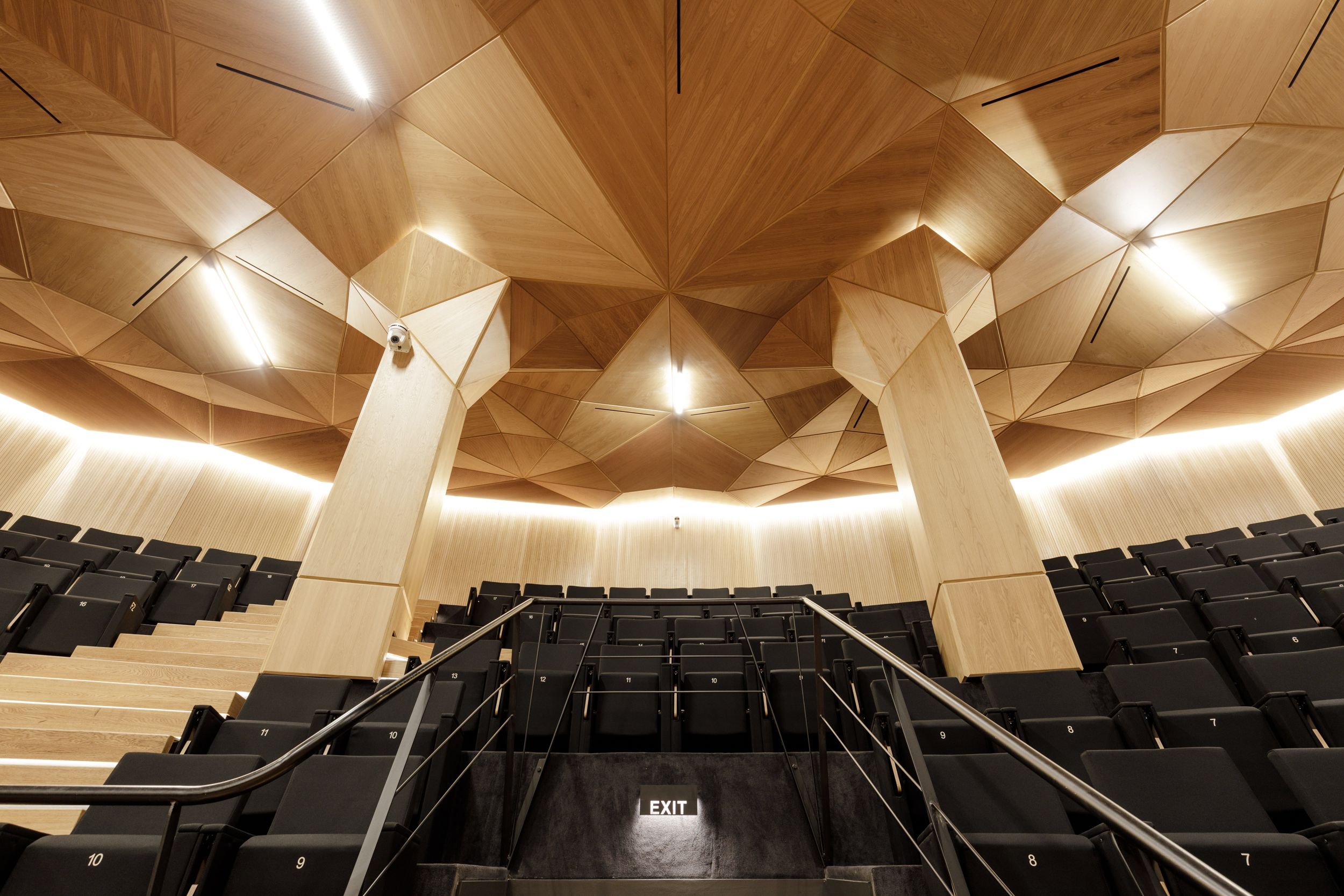Architectural Acoustics - Designing For Optimal Sound Quality
Architectural acoustics is the study of how to design and change the way buildings and spaces sound. This field of study is about making acoustic environments that work best for the people who live or work in a building, whether that's for speech clarity, music performance, or noise reduction.
Author:George EvansApr 03, 202319 Shares442 Views

Architectural acousticsis the science of designing and manipulating the sound quality within buildings and spaces.
This field of study involves the creation of acoustic environments that are optimized for the specific needs of the building's occupants, whether that be for speech intelligibility, music performance, or noise reduction.
Architectural acoustics is a vital consideration in the design of buildings that host public events, such as concert halls, theaters, and conference centers.
However, it is also important in other settings such as offices, classrooms, and hospitals where sound quality can have a significant impact on productivity and patient recovery.
What Is Architectural Acoustics?
Architectural acoustics is the study of how sound behaves in buildings and other constructed spaces.
It involves the design and implementation of acoustic treatments and technologies to optimize sound quality within a space, whether it be for music, speech, or other auditory activities.
Architectural acousticians work to understand the behavior of sound waves within a given space, and to develop strategies for enhancing sound quality and minimizing unwanted noise and reverberation.
This field encompasses a wide range of settings, from concert halls and recording studios to classrooms, offices, and even outdoor environments.

Sounds in Spaces: Architectural Acoustics with Thomas Heatherwick
The Basics Of Architectural Acoustics
The science of architectural acoustics is founded on the principles of physics, psychology, and human perception.Sound is a complex phenomenon that can be broken down into a number of measurable properties, including frequency, amplitude, and phase.
Architectural acousticians use these properties to design spaces that can control sound reflection, absorption, and transmission.
There are a number of factors that can influence the acoustics of a building, including the size and shape of the room, the materials used in construction, and the placement of sound sources and absorptive surfaces.
Architects and acousticians must work together to balance the aesthetic and functional needs of the building with the technical requirements of acoustic design.
Applications Of Architectural Acoustics
Architectural acoustics is an important consideration in a wide range of building types, from concert halls and theaters to classrooms and offices. Some specific applications of architectural acoustics include:
- Concert halls and theaters:These buildings require acoustics that can support music performance and speech intelligibility. Acoustic design must consider factors such as reverberation time, sound diffusion, and sound isolation.
- Classrooms and lecture halls:In educational settings, acoustics can have a significant impact on learning outcomes. A well-designed classroom will minimize noise from outside the room and ensure that students can hear the instructor clearly.
- Offices and commercial spaces:Acoustics can have a direct impact on productivity and employee wellbeing. A poorly designed office may be subject to distracting noise levels or poor speech intelligibility, leading to reduced productivity and increased stress.
The Future Of Architectural Acoustics
The field of architectural acoustics is continually evolving, with new advancements in technology and techniques shaping its future.
One significant area of development is the use of virtual and augmented reality tools to simulate acoustic environments and test acoustic designs before construction begins.
This technology allows architects and acousticians to explore the acoustic properties of a space in a more immersive way, enabling them to create more accurate designs that meet the needs of the building's occupants.
Another area of focus in the future of architectural acoustics is sustainable design. As society becomes increasingly aware of the impact of human activities on the environment, there is growing interest in using environmentally-friendly materials in building construction.
This presents a new challenge for acousticians, as traditional sound-absorbing materials may not be sustainable. As a result, new materials and designs that balance the need for acoustic performance with sustainability will be a key focus for the future of architectural acoustics.
Continued growth of the global population and urbanization means that there will be an increasing demand for buildings that can accommodate large numbers of people while maintaining optimal sound quality.
Architectural acoustics will play a vital role in meeting this demand by designing buildings that can effectively control sound reflection, absorption, and transmission.
The future of architectural acoustics is bright, with new technology, materials, and techniques enabling designers to create more effective and sustainable acoustic environments.
As the field continues to evolve, it will play an increasingly important role in shaping the buildings and spaces that we interact with every day, improving our experiences and enhancing our quality of life.
People Also Ask
How Does Architectural Acoustics Affect Sound Quality In Buildings?
Architectural acoustics plays a crucial role in determining the quality of sound within a building. The design of a building's interior can either enhance or impede the acoustics of a space.
For example, a room with hard, reflective surfaces will create echoes and reverberations that can make it difficult to hear and understand speech.
On the other hand, a well-designed space with proper sound-absorbing materials and strategic placement of sound reflectors can create a balanced and pleasant listening environment.
What Are Some Common Techniques Used In Architectural Acoustics Design?
Architectural acoustics designinvolves a variety of techniques and strategies to optimize the sound quality of a space. These may include the use of sound-absorbing materials such as acoustic ceiling tiles, carpets, and wall panels, as well as the placement of sound reflectors to create a balanced sound environment.
Other techniques may involve the use of sound barriers to prevent sound transmission between different areas of a buildi
g or the design of spaces with specific acoustic properties for certain activities, such as concert halls or recording studios.
How Can Acoustic Simulation Software Help In Architectural Acoustics Design?
Acoustic simulation software can be a valuable tool in the design of buildings and spaces for optimal acoustics. This software can help architects and acousticians model and predict the acoustic performance of a space before construction begins.
By inputting parameters such as room dimensions, surface materials, and intended use of the space, acoustic simulation software can generate visualizations and data on the sound quality of a space.
This allows designers to make adjustments to the design to optimize acoustic performance before construction begins.
What Are Some Common Challenges In Architectural Acoustics Design?
Architectural acoustics design can be a complex and challenging process due to the many factors that can influence sound quality in a space.
These may include the size and shape of the room, the types of materials used in construction, the intended use of the space, and the external environment.
Other challenges may arise when attempting to balance the needs and preferences of different stakeholders, such as clients, performers, and audiences.
Effective communication and collaboration among designers, acousticians, and other stakeholders are essential to overcome these challenges and create optimal acoustic environments.
How Can Architectural Acoustics Improve Speech Intelligibility In Buildings?
Speech intelligibility is a critical factor in the design of buildings and spaces, particularly those used for communication and education.
Architectural acoustics can play a significant role in improving speech intelligibility by reducing reverberation and background noise and ensuring that sound is directed towards listeners.
This may involve the use of sound-absorbing materials, strategic placement of sound reflectors, and other techniques to create a balanced and clear sound environment.
Effective acoustic design can help ensure that speech is easily understood and can improve overall communication and learning outcomes.
Final Words
Architectural acoustics is a highly specialized field that plays a critical role in the design of buildings and spaces.
By balancing the aesthetic and functional needs of the building with the technical requirements of acoustic design, architects and acousticians can create environments that are optimized for sound quality.
From concert halls and theaters to classrooms and offices, the applications of architectural acoustics are broad and far-reaching.
As technology continues to advance, the future of architectural acoustics will likely see new tools and approaches emerge, leading to even more innovative and effective designs.
Overall, architectural acoustics is an essential consideration for anyone involved in building design, as it has a significant impact on the experiences and outcomes of the building's occupants and visitors.

George Evans
Author
George Anderson, an exceptional architectural designer, envisions and brings to life structures that transcend the realm of imagination. With an unwavering passion for design and an innate eye for detail, George seamlessly blends form and function, creating immersive spaces that inspire awe.
Driven by a deep appreciation for the interplay of space, light, and materials, George's innovative approach redefines the possibilities of architectural design. His visionary compositions leave an indelible mark, evoking a sense of wonder and transforming the built environment.
George Anderson's transformative designs and unwavering dedication continue to shape the architectural landscape, pushing the boundaries of what is possible and inspiring generations to come.
Latest Articles
Popular Articles